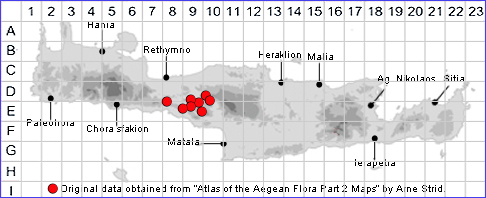SPECIES DESCRIPTION
TULIPA DOERFLERI
Family and Genus:- See- LILIACEAE
Common Names:- None
Homotypic Synonyms:- None
Meaning:- Tulipa. Derived from the Persian word thoulyban, for a turban.
Doerfleri (L) Possibly for the Austrian botanist Ignaz Dorfler (1866-
1950).
General description:- Short perennial.
Bulb:-
1) c. 2 x 1.5 cm, ovoid, usually producing underground stolons, bulb tunics
glabrous.
Stems:-
1) 10-30 cm, rather stout.
Leaves:-
1) 3 or 4, suberect, lanceolate to broadly linear, slightly canaliculate, glaucous-
green.
Flowers:-
1) Solitary, campanulate, usually 35-45 mm, usually not opening widely.
2) Perianth segments, elliptical, subobtuse:
a) inner and outer similar, bright to dark red, at thevbase with large greyish-
purple blotch with diffuse yellow margins.
3) Anthers, c. 6 x 3 mm, dark purple with yellow pollen.
4) Ovary, narrowly ovoid.
Fruit:-
1) Capsule, globose or ellipsoid.
2) Seeds, flat, numerous.
Key features:-
1) Perianth segments, elliptical, subobtuse.
Habitat:- Seasonally damp habitats with deep soil in cultivated and fallow fields and
olive groves. 400-800 m.
Comments:-
An archaeophytic plant propagating vegetatively by bulblets and stolons never
seeds, dispersed locally by the cultivation of the soil, but is ecologically confined to
its habitat. Presumably it could not have survived before agriculture was brought to
Crete and it seems likely that it was originally introduced by humans.
Distribution:- Endemic and know from only a small area east of Spili, where it may
be locally abundant. Perhaps originally introduced.
Flowering time:- Mid-Apr to mid-May.
Photos by:- Yannis Zacharakis
Status:-
Protection status (for threatened species): Greek Presidential Decree 67/1981

